The Words Not Spoken: The crash of Avianca flight 052
Note: this accident was previously featured in episode 30 of the plane crash series on March 31st, 2018, prior to the series’ arrival on Medium. This article is written without reference to and supersedes the original.
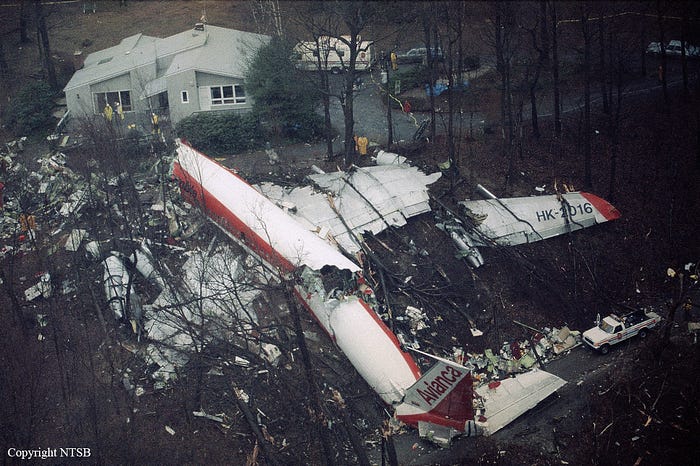
On the 25th of January 1990, Avianca flight 052 ran out of fuel while attempting to land at New York’s John F. Kennedy Airport, sending the Boeing 707 plummeting into the quiet suburb of Cove Neck on Long Island. The disaster killed 73 people and thrust a spotlight on the fast-paced world of New York air traffic control, which in its efforts to deal with an influx of planes during a powerful storm had somehow allowed the Colombian airliner to slip through the cracks, patiently waiting for its turn to land as its fuel reserves ticked down toward zero. At the center of the case were questions of communication: why didn’t the pilots declare an emergency? Why wasn’t information passed from one controller to the next? Should the controllers have picked up on clues that flight 052 was in trouble? Did the pilots speak enough English to convey proper urgency? The answers could only ever be subjective, and aviation psychologists have been picking them apart ever since. But one way or another, the dramatic sequence of missed opportunities and miscommunications above New York that night holds lessons not only for pilots, but for all of us, about the ways in which we speak to one another, and the subtle interpersonal dynamics which define what we say and what we leave out. Indeed, while the story of Avianca flight 052 consists almost entirely of a series of interconnected conversations, the most important part of that story is not so much what was said, but what was left unspoken, and the endlessly frustrating search for some reason why.
◊◊◊
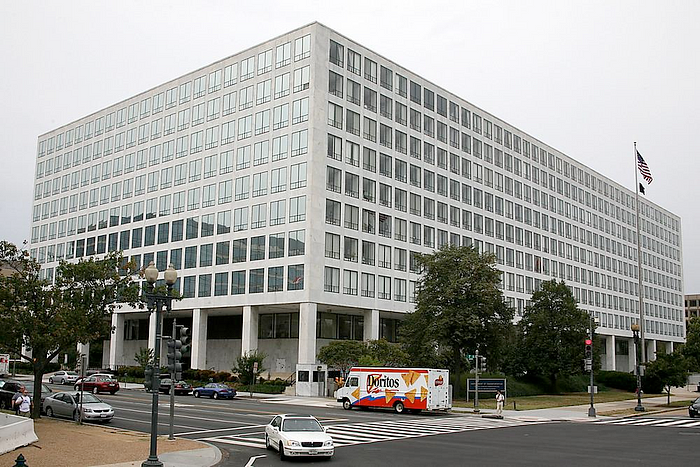
On the sixth floor of the Federal Aviation Administration headquarters in Washington, D.C., the 25th of January 1990 promised to be a busy day for the traffic management experts at America’s Central Flow Control Facility, or CFCF. Commonly referred to simply as Flow Control, the CFCF is like an air traffic control center which controls other air traffic controllers, directing national air traffic patterns on a macro level to ensure that planes get where they’re supposed to go without overwhelming certain airspaces and airports. Pilots never hear directly from Flow Control, but the supervisors at large area control centers talk to them frequently. It is also very rare for Flow Control to play any meaningful role in a plane crash — but there is at least one notable exception.
On that wintry day in 1990, a series of powerful storms slammed the east coast of the United States, bringing high winds and low visibility to airports throughout the region. When the weather turns bad, it becomes more difficult for airports to handle high traffic volumes, and delays start to spread throughout the network. Flow Control’s job was to choose where and when to implement those delays, through what flow controllers refer to as a “program.” A program is a set of orders to various facilities intended to ensure that the number of planes headed to a particular airport corresponds with that airport’s fluctuating capacity in real time. There was no doubt that New York’s John F. Kennedy International Airport, which lay directly in the path of the storm, would need such a program.
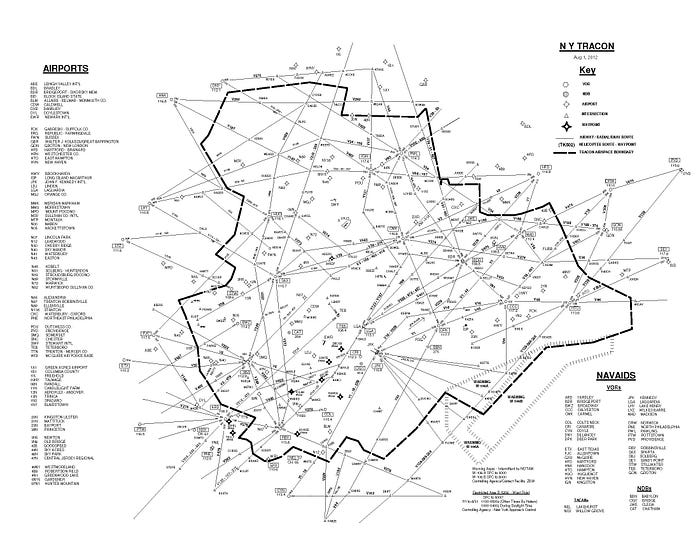
Early that morning, with fog and high winds already strafing JFK, problems were beginning to mount in the New York Terminal Approach Control area, or TRACON, the air traffic control facility which handles traffic coming in to JFK, LaGuardia, Newark, and 35 other smaller airports in the New York area. At 7:46, the Flow Control day shift supervisor called the New York TRACON flow specialist in order to work out an acceptance rate for JFK — that is, how many planes the airport could take per hour. The specialist is hereafter referenced using the alphanumeric code assigned to his TRACON, which in this case was N90.
“[We] may only be able to do 28, that’s a reality today, it’s one of those unfortunate days,” N90 told the Flow Control supervisor.
“You don’t think you can do 30 or 32?” the supervisor asked.
“I doubt it,” N90 replied. He explained that under the present conditions, the active runway at JFK was only guaranteed to handle 26 airplanes per hour, and that while it was possible to squeeze in more, 32 was unrealistic.
All of this was giving the supervisor a headache. A flow control program was also in place for Boston due to bad weather there, and snow was falling in Chicago. Planes were being placed into holding patterns waiting to land in Philadelphia, LaGuardia, and Newark, while others were being asked to delay their departures for New York by up to two hours. If they couldn’t keep traffic coming into JFK, there would be mass cancellations.
Then at 8:39, the supervisor got a call from Boston Center, advising him that at least 55 international flights to US airports which had departed Europe earlier that morning were presently approaching eastern Canada. Now the pressure was truly on. Those flights needed to land, and most of them were going to JFK — 28 landings per hour just wasn’t going to cut it. Minutes later, he called N90 and informed him that the program for JFK was being built with an acceptance rate of 33 landings per hour.
“33 an hour sounds…” N90 started to say.
“Well, you are not going to get that, [but] I really can’t put three hour ground delays out,” said the Flow Control supervisor.
N90 ultimately agreed to implement the program. If Flow Control allowed fewer than 33 planes per hour into JFK, then they would have to order departures for that airport to be delayed by three hours or more, which was unacceptable — airlines would cancel the flights. Some of those planes would probably have to hold en route or divert to alternate airports, but that was better than being cancelled. The plan, however unrealistic it may have been, was now in place, scheduled to take effect at 14:00 that afternoon.
By 12:30, however, the situation was already deteriorating. There were now 60 international flights heading for JFK, and N90 was anticipating that the airport would only manage to take 25 planes per hour. Even worse, most of the airports these planes could divert to were affected by the same winter storm. The shift supervisor, in a later conversation with Boston about the transfer of planes to New York airspace, expressed apprehension: “I got bad vibes,” he said.
“You can put Boston on the record for that too,” Boston replied.
◊◊◊
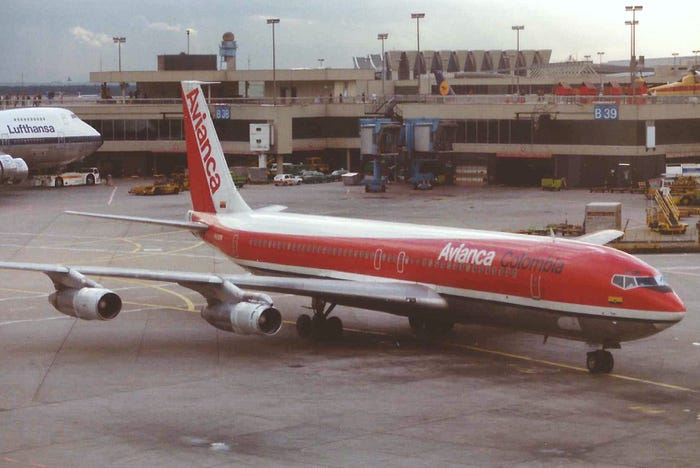
Meanwhile, thousands of kilometers to the south, the crew of Avianca flight 052 were wrapping up a scheduled refueling stop in Medellín, Colombia. The aging four-engine Boeing 707 operating for Colombia’s flag carrier had left Bogotá two hours earlier with 149 passengers and a crew of nine, bound for New York, with a brief stopover in Medellín on the way. In the cockpit, 51-year-old Captain Laureano Caviedes Hoyos, 28-year-old First Officer Mauricio Klotz, and 45-year-old Flight Engineer Matias Moyano calculated the amount of fuel they would need for the journey. Regulations called for 25,183 kg of fuel for the 4 hours and 40 minutes it would take to reach New York, plus 3,450 kg, or 30 minutes, to fly to an alternate airport; 2,180 kg to hold for another 30 minutes; 680 kg for taxiing; and 2,045 kg, or 28 minutes, as a reserve. The flight plan also included an extra 1,850 kg not assigned any specific purpose, bringing the total planned fuel load to 36,260 kg. In the event, however, the fuel tanks were “topped up” to a value of approximately 36,500 kg, simply because they could be. Although the tanks were still not full, this was the maximum amount that could be added without putting the 707 over the maximum takeoff weight for runway 36 at Medellín.
With Captain Caviedes at the controls, flight 052 left Medellín at 15:08 with approximately six and a half hours of fuel on board. Also on board was an outdated weather forecast issued some ten hours earlier, which nevertheless forewarned of bad conditions at JFK. The flight plan, which the pilots had evidently reviewed, indicated that their designated alternate airport was Boston, although according to the weather forecast that airport was likely to experience conditions just as bad as those in New York. In fact, the forecast visibility in Boston was below the minimum allowable for an alternate, and an airport with better weather should have been selected, but Avianca dispatchers never did so. Despite this, the pilots were probably more concerned with their airplane’s numerous mechanical faults, which included, annoyingly, an inoperative autopilot.

As flight 052 cruised above the Caribbean, the pilots probably had no knowledge of the increasingly complicated traffic situation over New York. At that very moment, however, controllers were facing a traffic headache which would be unfathomable to most laypeople. Throughout most of the afternoon, JFK hadn’t fallen too far short of the 33-aircraft-per-hour acceptance rate, but at around 16:00 the weather took a turn for the worse as visibility abruptly dropped to 400 meters, which wasn’t supposed to happen for another four hours. The deteriorating weather resulted in the unforeseen closure of runway 22 Right, which required more than 400 meters visibility for landing, and planes landing on 22 Left began missing their approaches after failing to spot the runway. Other runways couldn’t be used because the winds out of the southwest were too strong. But despite the fact that JFK’s runway capacity had been reduced by more than half, Flow Control continued to allow 33 JFK-bound aircraft into New York airspace each hour, and more planes around the country were taking off every minute.
By 16:30, there were 39 planes waiting to land at JFK, and controllers at the New York Area Control Center, or ARTCC, were forced to place many of them into holding patterns because the TRACON was too saturated to take them. The New York ARTCC subsequently filled to capacity as well, forcing neighboring area control centers to hold New York-bound traffic in their sectors too.
By 18:10, the Washington ARTCC had been unable to hand off its traffic to the New York ARTCC for so long that some New York-bound planes started to divert. Others remained in holding as far south as North Carolina. Proceeding up the east coast, Avianca flight 052 got its first taste of trouble at 19:04, when the Washington area controller ordered it to enter a holding pattern off the coast of Norfolk, Virginia, in order to wait for space to open up in the New York sector. The flight would remain there for 19 minutes, circling over the ocean at 37,000 feet, before Washington finally cleared it to proceed.
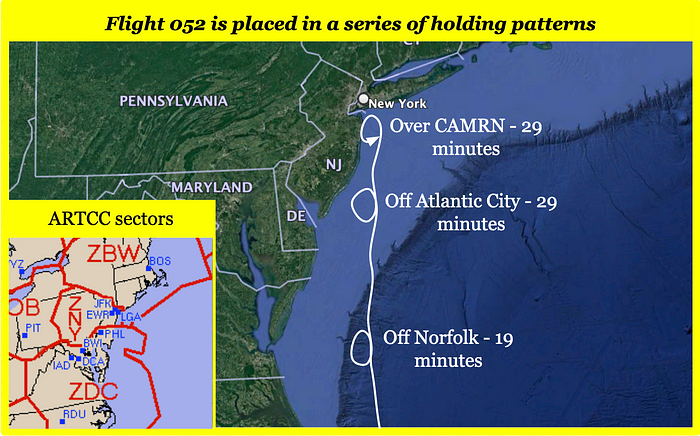
The reprieve didn’t last long. Twenty minutes later, the Washington area controller again ordered flight 052 to hold, this time off Atlantic City, New Jersey, just short of the border with the New York ARTCC. It remained there for 29 minutes, burning through fuel. By now the pilots must have been discussing whether to divert, because at 20:09 First Officer Klotz could be heard asking the controller about delays into Boston, their designated alternate. Official documents do not indicate what response they received, if any, because at that same moment they were cleared to contact the New York ARTCC, which in turn cleared them to leave holding over Atlantic City at 20:12.
For the past several hours, traffic into JFK from the south had been routed through a hold over the CAMRN intersection, located 72 kilometers short of the airport off the New Jersey coast. By the time Avianca flight 052 made contact with the New York ARTCC, numerous planes were already stacked up at CAMRN, circling the imaginary waypoint at various flight levels. Avianca flight 052 had not even left holding at Atlantic City when the New York area controller said, “Avianca zero five two heavy, cleared to CAMRN, CAMRN is your clearance limit, hold as published, ten mile legs, and maintain level flight one niner zero. Expect further clearance at zero one three zero.”
The response from First Officer Klotz was brief: “Alright,” he said, and that was that — flight 052 was holding again. The controller had said they could expect further clearance at 01:30 UTC, or 20:30 local, which was only 20 minutes away. When flight 052 entered the hold at 20:18, the controller bumped this time back to 20:39, but the delay still did not seem unreasonable. Unaware of the extent of the backup, the pilots might have believed this estimate was a guarantee.
In reality, however, “expect further clearance” (or EFC) times are a controller’s best guesses, and they can be wildly inaccurate. And in this case, the wait was going to be a lot longer than promised. In fact, at 20:35, with shifting winds and low visibility over the field, the Kennedy tower controller called N90 and said, “[The weather]’s pretty bad, we got all sorts of wind shears and missed approaches due to not seeing the runway… Out of the last hour I think twenty percent of the guys [who] attempted approaches went on to miss.” Every one of those planes would have to go around and rejoin the landing queue, clogging the airspace even more. The delays began to lengthen still further.
By this time, flight 052 was approaching or had already reached the point at which it would no longer have enough fuel to safely divert to Boston, and a decision needed to be made about where to land. Whether the flight crew discussed the matter among themselves is not known, but even if they knew about this impending cutoff point, they might have been lulled into a false belief that they would soon be cleared to approach JFK airport. In fact, the “expect further clearance” time of 20:39 came and went, and at 20:43 First Officer Klotz nervously transmitted, “Kennedy, Avianca zero five two heavy.”
“Avianca zero five two heavy, go ahead,” the controller replied.
“Thank you sir, you have any estimates for us?” Klotz asked.
“Avianca zero five two heavy, ah, might be able to get you in right now, stand by,” said the controller. Several seconds passed before he came back with bad news: “Avianca zero five two, uh, we just got off the line, it’s uh, indefinite holding at this time.” He then instructed flight 052 to continue holding at CAMRN and maintain 11,000 feet.
“Avianca zero five two, roger,” Klotz dutifully replied.
“Avianca zero five two heavy, expect further clearance time zero two zero five,” the controller added.
Flight 052 had already been holding at various locations for over an hour, and asking them to hold another 21 minutes until 21:05 was simply pushing things too far. Klotz keyed his mic and replied, “Zero two zero five, uhhhh… well, I think we need priority, we’re passing [unintelligible].”
The unintelligible words, which were audible in the moment if not on the recording, evidently had something to do with flight 052’s fuel status, because the controller replied, “Avianca zero five two heavy, roger, how long can you hold and what is your alternate?”
“Okay, stand by on that,” Klotz replied. The pilots must have been discussing their options among themselves, although what they said is unknown. One minute later, having apparently received some kind of judgment from Captain Caviedes, Klotz radioed back, “Kennedy, Avianca zero five two heavy.”
“Avianca zero five two heavy, go ahead.”
“Yes sir, uh, we’ll be able to hold about five minutes, that’s all we can do,” Klotz said.
“Avianca zero five two heavy, roger, what is your alternate?” the controller asked.
“Uh, we said Boston, but uh, it is full of traffic I think,” said Klotz.
“Avianca zero five two, say again your alternate?”
“It was Boston but we can’t do it now, we, we don’t — we run out of fuel now,” Klotz said.
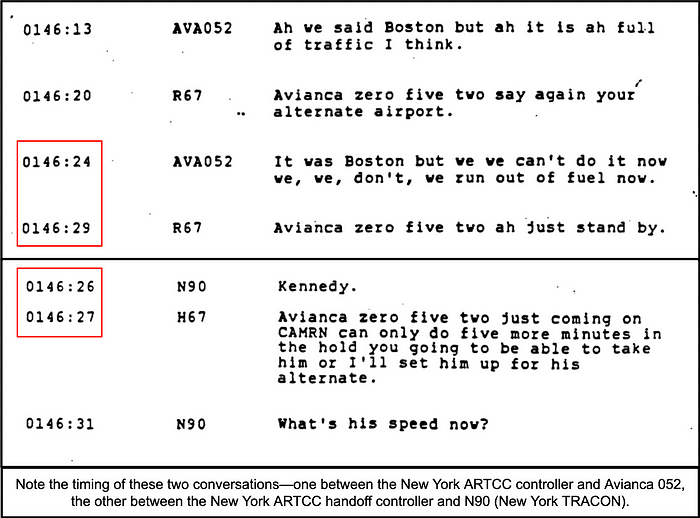
As soon as he heard flight 052 mention low fuel, a handoff controller, who was responsible for transferring airplanes from New York ARTCC to the New York TRACON, picked up the phone and called the TRACON to see whether they could take the Avianca jet. On the other end of the call was N90, although not the same N90 who was consulted on the flow program, because there had been a shift change.
“Kennedy,” N90 answered.
“Avianca zero five two just coming on CAMRN can only do five more minutes in the hold,” the handoff controller said. “You going to be able to take him or I’ll set him up for his alternate?”
Crucially, the handoff controller had initiated his call before First Officer Klotz clarified that they couldn’t reach their alternate. His question to N90 in fact overlapped exactly with Klotz’s statement that “It was Boston but we can’t do it now,” causing him to miss this all-important information.
“What’s his speed now?” N90 asked.
“Uh, I’m not sure, be quite honest with you, holding speed,” said the handoff controller.
“Slow him down to one eighty and I’ll take him,” said N90.
The conversation lasted 17 seconds. As soon it was over, the handoff controller gave the thumbs up to the area controller, who then cleared flight 052 to leave CAMRN and contact the TRACON. For the crew of flight 052, it would have seemed as though their request for “priority” had gotten the desired result. Little did they know that an insidious miscommunication had occurred. Unaware that flight 052 was already unable to reach its alternate airport, the TRACON controllers believed the level of urgency to be much lower than it actually was. In fact, they assumed that Avianca 052 could only do “five more minutes in the hold” before it would have to divert to its alternate, when in fact that ship had sailed, and the crew probably meant that five more minutes of holding might compromise their ability to land safely at Kennedy.

With 46 minutes of fuel remaining, flight 052 departed CAMRN and made contact with the TRACON (which, should a reminder be needed, was the intermediate control center responsible for taking planes from the ARTCC and funneling them toward various airports). “New York approach, Avianca zero five two heavy, we have information yankee, with you one one thousand,” said First Officer Klotz.
At the TRACON, the controller responsible for approaches via CAMRN picked up Avianca’s call. “Avianca zero five two heavy, New York approach, thank you… if you’re not already doing it, you can expect an ILS two two left, altimeter two niner six niner, proceed direct Deer Park.”
Once again, it seemed to the crew that they were being sent for an immediate approach, in accordance with their request for priority. But in fact the TRACON controller was simply slotting them into the queue with everyone else. And to do that, he would need to put flight 052 into — you guessed it — a hold. “Avianca zero five two, turn right, right turn heading two two zero, I’m going to have to spin you sir,” he said.
“Okay, heading two two zero, Avianca zero five two,” Klotz meekly acknowledged. Flight 052 would spend the next six minutes making a 360-degree loop before rejoining the approach sequence at a gap in the queue. Had he understood the urgency, the controller could have simply created a gap by ordering other planes out of Avianca’s way, but he did not.
During the hold, the crew received more bad news. “Avianca zero five two,” said the controller, “I have a wind shear for you at fifteen, [an] increase of ten knots at fifteen hundred feet and then an increase of ten knots at five hundred feet, reported by [a] 727.”
In the cockpit, First Officer Klotz was the only pilot who spoke more than a few words of English. “What is he saying, wind shear?” Captain Caviedes asked in Spanish.
“He’s saying that a 727 reported wind shear on approach at 500 feet, in excess of 10 knots,” Klotz translated.
Flight 052 straightened back out and joined the landing queue. Thirty-seven minutes of fuel remained. Strong, variable winds on the approach, as had been reported, were the last thing they needed.
Several minutes passed. In the background, an American Airlines flight advised ATC that it was 14 minutes away from having to declare a fuel emergency. Flight Engineer Moyano, watching their own fuel quantity drop toward zero, apparently produced a Boeing non-normal checklist for flight with low fuel levels and began summarizing its contents in a mixture of Spanish and English. “When we have — with one thousand pounds or less in any tank… the go-around procedure is stating that the power be applied slowly and to avoid rapid accelerations and to maintain a minimum of nose up attitude.”
“To maintain what?” Captain Caviedes asked.
“Minimum, minimum nose up attitude,” Klotz repeated in English. Translating to Spanish, he said, “That means the least nose up attitude that one can hold.”
The fact that they were reading this checklist at all shows that they knew their fuel situation was serious, and that they would likely land with less than 1,000 pounds (450 kg) of fuel in each tank. When flying with so little fuel, pulling the nose up too steeply could cause the fuel to slosh to the back of the tanks, uncovering the fuel pump inlets and starving the engines. With so little fuel, they were all but obligated to declare an emergency, but for whatever reason, they did not.
Despite the fact that the controller had ordered them to perform a loop instead of letting them cut to the front of the queue, the pilots still seemed to think they were being given what they needed. On the cockpit voice recording, First Officer Klotz could be heard speaking to Flight Engineer Moyano. “Right now we are proceeding to the airport inbound and we have twenty seven miles,” he said.
“Roger,” Moyano replied.
“This means that we’ll have hamburger tonight!” Klotz joked.
Unfortunately, he would never get his hamburger.
Level at 5,000 feet, flight 052 received clearance to turn left onto its base leg; only one turn remained before they could line up with the runway. They must have known they were cutting it close — at that point 27 minutes of fuel remained, and if everything went smoothly, they would land in 17 minutes. But that was a big “if.”
In the cockpit, tension was building. “The localizer — are we going to intercept it at two thousand?” Captain Caviedes asked.
“Yes, the initial approach altitude is two thousand according to the ATC,” Klotz replied.
“They got us,” said Moyano. “They are already vectoring us.”
“They accommodate us ahead of a — ” Klotz started to say.
“What?” Caviedes asked.
“They accommodate us,” Klotz said.
“They already know that we are in bad condition,” said Moyano.
“No, they are descending us,” said Caviedes.
“One thousand feet,” said Klotz.
“Ah yes.”
“They are giving us priority,” Klotz emphasized.
At 21:10, flight 052 made its final turn to intercept the localizer, which would help them align with the runway. One minute later, the controller cleared them for an Instrument Landing System (ILS) approach to runway 22 Left. The pilots began to work through their approach checklist.
“Localizer alive.”
“Give me flaps fourteen.”
“We are thirteen miles from the outer marker.”
“Navigation number one.”
“Give me flaps twenty-five.”
Landing was now minutes away. But between them and salvation lay the wind shear, a dangerous change in wind speed over a short distance. Although the pilots had been told it was there, they had no idea of its true strength. At 1,000 feet, the wind was blowing against them at 60 knots; this figure dropped to 50 knots at 500 feet, then to 20 knots at ground level, for a total of 30 knots of shear. With an inoperative autopilot, Captain Caviedes would need to compensate for this 30-knot decrease in headwind while simultaneously trying to hold the plane on the localizer and glide slope manually, or else he would miss the runway. It was a demanding task, and he would only have one chance to get it right.

At 21:15, flight 052 was handed off to the Kennedy tower controller, who informed them that they were number three in line for landing behind a Boeing 727. Less than nine miles remained until touchdown. “Can I lower the landing gear?” Captain Caviedes asked.
“No, I think it is too early now,” said Klotz. “If we lower the landing gear, we have to hold very high nose attitude.” The implication, of course, was that if they pitched up too much, the fuel would drain away from the fuel pumps and they would lose all their engines.
“Can you increase your airspeed one zero knots?” the tower asked.
“Okay, one zero knots, increasing,” flight 052 replied.
“Increase, increase!” the controller repeated.
“Increasing!” Klotz acknowledged.
“What?” Caviedes asked.
“Ten knots more!” said Moyano.
“Tell me things louder because I’m not hearing it!” Caviedes snapped.
“We are three miles to the outer marker!” said Klotz. Moments later, they intercepted the glide slope down to the runway. “Glide slope alive!” he announced.
“Lower the gear,” said Caviedes.
“Gear down,” said Klotz. A low rumble filled the cabin as the gear extended. The pilots hurried through another checklist, extending the flaps to 40 degrees, arming the speed brakes, and carrying out other necessary tasks.
“Avianca zero five two, two two left wind one niner zero at two zero, cleared to land,” said the tower.
“Are we cleared to land, no?” Caviedes asked.
“Yes sir, we are cleared to land,” said Klotz. “Localizer to the left, slightly below glide slope,” he pointed out moments later.
Due to the powerful headwind, they were making slower progress across the ground than normal. Not realizing that this was the case, Captain Caviedes had selected a normal rate of descent, causing them to descend too steeply.
“Give me fifty,” Caviedes said.
“Flaps fifty now,” Klotz acknowledged.
“Fifty, green light, final set,” said Moyano. “All set for landing.”
“Below glide slope,” Klotz warned.
“Localizer, glide slope one thousand feet, stand by for lights,” said Caviedes.
“Standing by for lights,” Klotz replied. They expected the runway to come into view through the mist at any moment.
“Slightly below glide slope,” Klotz warned again. “One thousand feet above field… below glide slope. Glide slope!”
Flight 052 was dropping fast, while still well short of the runway. Captain Caviedes fought to get them back up, and he briefly succeeded, but at that moment the bottom fell out from under them.
“This is the wind shear!” Klotz exclaimed.
The headwind backed off rapidly, and their airspeed plummeted. The plane began to descend rapidly from just a few hundred feet above the ground.
“Glide slope!” Moyano said.
The ground proximity warning system suddenly burst into life. “WHOOP WHOOP, PULL UP!” it blared. “SINK RATE! SINK RATE!”
“Five hundred feet!” Klotz shouted.
“WHOOP WHOOP, PULL UP!” the GPWS repeated, over and over again. “WHOOP WHOOP, PULL UP! WHOOP WHOOP, PULL UP!”
“Lights!” Caviedes demanded.
“WHOOP WHOOP, PULL UP! WHOOP WHOOP, PULL UP!”
“Where is the runway?” he exclaimed.
“WHOOP WHOOP, PULL UP! WHOOP WHOOP, PULL UP!”
“The runway, where is it!?” Caviedes shouted again, desperation in his voice.
“GLIDE SLOPE,” said the GPWS. “GLIDE SLOPE!”
“I don’t see, it I don’t see it!” Klotz said, on the verge of panic.
Surrounded by seething fog and howling wind, flight 052 hurtled downward, just seconds away from crashing. In the cabin, passengers prayed and children screamed in terror. The pilots’ lives must have flashed before their eyes. They knew they didn’t have enough fuel to try again — the gauges were right in front of them, a hair’s breadth from reading empty. But they had ridden into the valley of death, and the enemy was attacking from every direction. At the last possible moment, Captain Caviedes felt that his hand had been forced. “Give me the landing gear up,” he said.
As Caviedes pulled the nose up and accelerated the engines to go-around power, flight 052 began to rise, abandoning the approach — the only approach it could have made. They had come within 200 feet of crashing into the ground nearly two miles short of the runway, but by avoiding one crash, the crew had only condemned themselves to another. Eleven minutes of fuel remained.
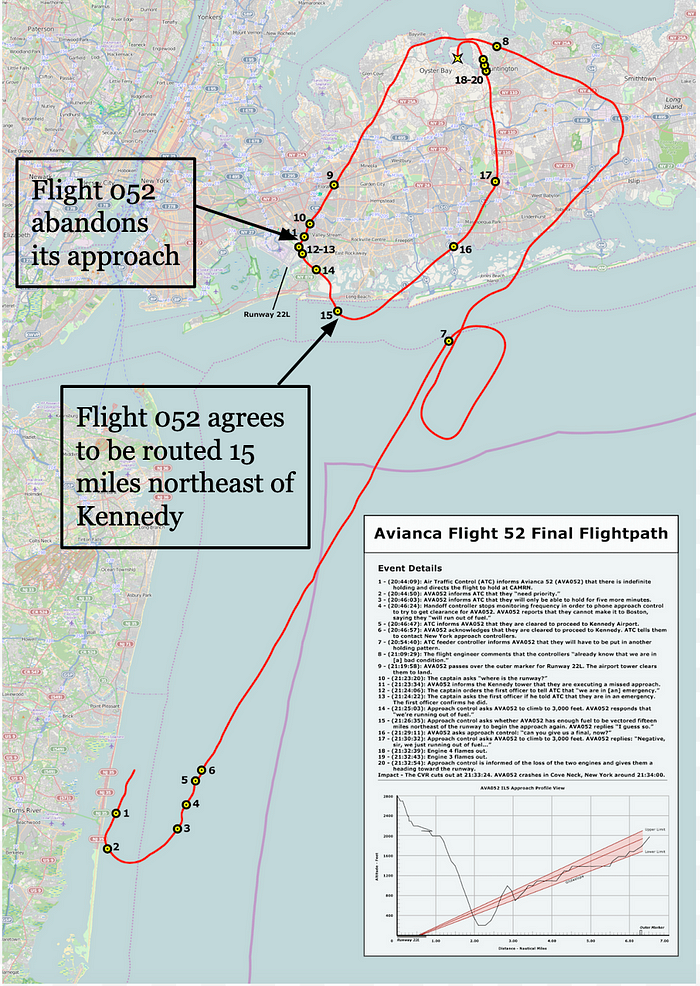
Still, the crew did not quite give up. “Request another traffic pattern!” Caviedes ordered.
Keying his mic, Klotz said, “Executing a missed approach, Avianca zero five two heavy!”
“Smooth with the nose, smooth with the nose, smooth with the nose!” Flight Engineer Moyano cautioned.
“Avianca zero five two heavy, roger, climb and maintain two thousand, turn left heading one eight zero,” said the tower.
“We don’t have fuel!” Caviedes exclaimed.
“Maintain two thousand feet, one eight zero on the heading,” Klotz translated.
“I don’t know what happened with the runway, I didn’t see it,” said Caviedes.
“I didn’t see it,” said Moyano.
“I didn’t see it,” Klotz also agreed.
“Avianca zero five two, you are making a left turn, correct sir?” asked the tower.
“Tell them we are in an emergency!” Caviedes shouted.
To the tower, Klotz said, “That’s right, to one eight zero on the heading, and uh, we’ll try once again, we’re running out of fuel!”
“Okay,” said the tower.
“What did he say?’ Caviedes asked.
“Maintain two thousand feet, one eight zero on the heading,” Klotz repeated. “Already advised him that we are going to attempt again because we now — we can’t — ”
“Advise him we are in an emergency!” Caviedes exclaimed. “Did you tell him!?”
“Yes sir, I already advised him!” said Klotz. But he hadn’t.
The tower controller then handed flight 052 back to the TRACON. Klotz began to apprise the controller of the situation again. “Approach, Avianca zero five two heavy, we just missed a — missed approach, and uh now we’re maintaining two thousand and five on the — ”
“Avianca zero five two heavy, New York, good evening,” said the controller. “Climb and maintain three thousand.”
“Climb and maintain three thousand, and uh we’re running out of fuel sir,” Klotz said. Nine minutes of fuel remained.
“Okay, fly heading zero eight zero,” the controller said.
Flight 052 began to climb toward 3,000 feet. “Did you already advise that we don’t have fuel!?” Caviedes said.
“Yes sir, I already advised him!” Klotz repeated. “Hundred and eighty on the heading, we are going to maintain three thousand feet and he’s going to get us back.”
“Okay,” said Caviedes.
Now the controller was calling them again. “And Avianca zero five two heavy, uh I’m gonna bring you about fifteen miles northeast and then turn you back onto the approach, is that fine with you and your fuel?” he asked.
It was very much not fine — by now they had only seven minutes of fuel left, nowhere near enough to fly 15 miles out from Kennedy and come 15 miles back in. The pilots must have known it too. But Klotz simply replied, “I guess so, thank you very much.” If they weren’t already doomed, they certainly were now.
Nevertheless, there was nothing they could do but keep flying until the end. For several more minutes, conversations continued.
“What did he say?” Caviedes asked.
“The guy is angry,” Moyano commented, presumably referring to the controller.
“Fifteen miles in order to get back to the localizer,” said Klotz.
Caviedes and Klotz set up their instruments for a second ILS approach that they would never make. Having done so, Caviedes said something which is probably untranslatable, but might best be rendered as, “Fuck it, I’m going to follow it.”
For a minute, the only sound was a repeated “stabilizer in motion” alert. Eventually, Caviedes said, “Take it easy, take it easy.” After that, another minute passed in silence.
For several more minutes, flight 052 continued on through the night, its pilots dutifully complying with air traffic control instructions and calling out configuration changes. All of the fuel gauges now read more or less empty. By the time they turned back to line up with the runway, they were flying on borrowed luck.
Then, at 21:32 and 39 seconds, one of the engines, having reached the end of its tank, sputtered and died.
“Flame out, flame out on engine four!” Flight Engineer Moyano exclaimed.
“It flamed out,” Caviedes confirmed.
Moments later, another engine followed. “Flame out on engine three, essential on number two, on number one!” said Moyano.
“Show me the runway!” Caviedes pleaded. But they were still 15 miles from the airport — there was no runway to show them.
“Avianca zero five two, we just lost two engines, and we need priority, please!” Klotz begged over the radio.
“Avianca zero five two, turn left heading two five zero, intercept the localizer,” the controller replied.
The cockpit voice recorder captured the sound of an engine spooling down. “Two five zero,” Klotz translated for Caviedes.
“Select the ILS!”
“It is on the number two!” said Klotz.
“Select the ILS!” Caviedes repeated.
“Avianca zero five two heavy, you’re one five miles from [the] outer marker,” said the controller. “Maintain two thousand until established on the localizer, cleared for ILS two two left.”
“Roger, Avianca,” Klotz breathlessly replied.
“That — no, that — ” Caviedes started to say. “Did you select the ILS?”
“It is ready on two!” Klotz replied. His would be the last words on the cockpit voice recording. One second later, engines one and two also ran out of fuel and began to spool down. The plane lost all electrical power; the radios went dead, the cockpit instruments failed, and the lights in the cabin flickered and went out. And then, drawn inexorably toward the earth by the indefatigable force of gravity, the powerless plane began to descend.
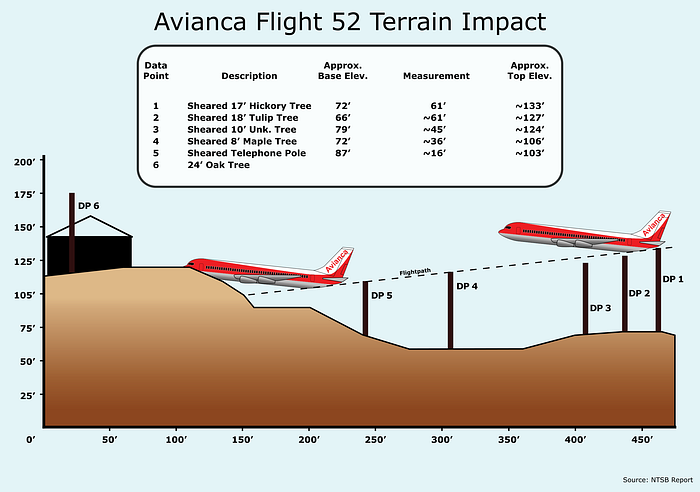
The TRACON controller watched as Avianca’s transponder return abruptly vanished. “Avianca zero five two, radar contact lost,” he said. There was no reply.
In the JFK tower, the phone rang — it was the TRACON.
“Tower cab,” the controller replied.
“Yeah, we’re not talking to Avianca any longer, he’s fifteen northeast of Kennedy,” said the TRACON controller.
“Uh, hm,” said the tower.
“Okay, so uh, if you get him, he’s NORDO,” said the TRACON, using shorthand for “no radio.” “We don’t know what his altitude [is], what his problem was, he last reported losing an engine.”
“Oh, wonderful,” said the tower.
At that moment, fifteen miles away, out in the cold and unforgiving night, Avianca flight 052 dropped silently out of the sky, like a great, black bird swooping down to roost among the trees. Few people heard it coming; none managed to see it. The 707 cleared a neighborhood, clipped several trees, and slammed headlong into the side of a ravine in the exurban community of Cove Neck. The fuselage stopped dead against the wall of the ravine, sending a loud boom echoing out through the darkness, followed by a series of smaller bangs as the cockpit detached, launched itself over a hilltop, and plowed through the back deck of a house. After that, save for the roar of the wind and the faint cries of the injured, there was silence.
◊◊◊

The silence did not linger over Cove Neck for long. As the first 911 calls began to roll in, local emergency services rushed to the scene. They found the plane broken into three pieces with its tail lying across Tennis Court Road, a narrow, one-lane, dead-end residential street winding over hills and through a forest, lined with a sparse mixture of well-kept homes and extravagant mansions. And inside the shattered fuselage, dozens of people were crying out for help. Almost every one of them had suffered broken bones, often more than one; many were covered in blood, both their own and others’. The impact had ripped most of the seats out of the floor and catapulted them forward; some flew clear out of the yawning hole at the front and into a resident’s backyard, while the rest fell back down to the tail, creating a tangled mess of seats, upholstery, and people, both dead and alive. As for how to save the survivors, rescuers were unsure where to even begin.
The rescue ended up being a drawn out affair, as firefighters repeatedly climbed into the steeply angled fuselage to pull out one badly injured passenger after another, including nearly two dozen children and infants. All the while, more and more emergency companies continued to arrive from all over Long Island, clogging Tennis Court Road so thoroughly that ambulances couldn’t get back out again once they had entered. In the chaos, rescue coordinators had gotten the mistaken impression that the crash involved a much larger Boeing 747, and to make matters worse, numerous units responded without being asked. Before long there were nearly 1,000 firefighters, police, and paramedics trying to shove their way up Tennis Court Road amid crowds of news reporters and curious onlookers. Unable to stem the chaos on the ground, first responders ultimately evacuated most of the injured by helicopter.
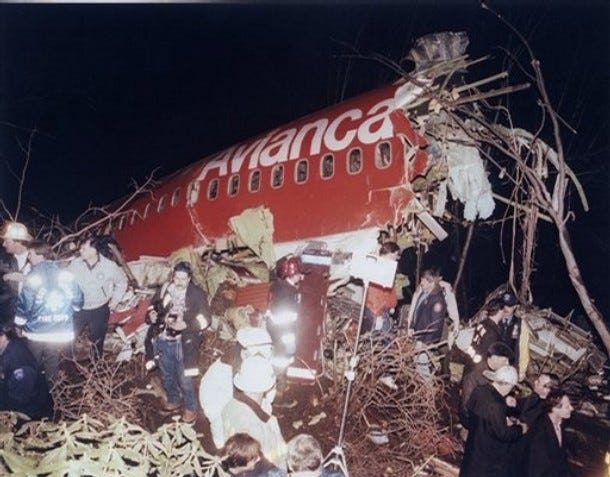
By the time the injured had been stabilized and the bodies counted, it was clear that the crash had taken a heavy toll. Family members who had come to meet their loved ones flying in aboard flight 052 were initially told that there were few fatalities, perhaps less than ten, but by the next morning, it was clear that the situation was much worse than they had expected. Out of 158 passengers and crew, 73 were dead, while 85 had survived, all but four of them having suffered serious injuries. The three pilots and five of the six flight attendants all perished; only one of the nine crew survived. At least 25 of the survivors were brought to hospitals in critical condition, but they ultimately pulled through. Two of these were subsequently found to be drug mules carrying cocaine capsules in their stomachs — unfortunately a common occurrence on flights from Colombia in the 1990s.
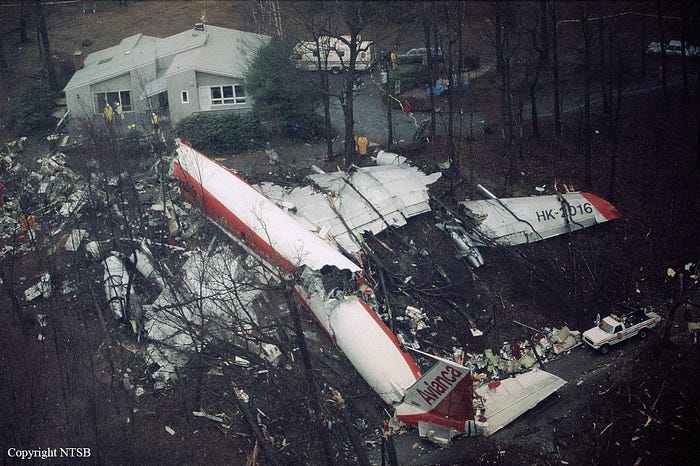
The crash of Avianca flight 052 is somewhat unique in having such a large proportion of seriously injured survivors, an outcome which has been attributed to the lack of a fire following impact, which in a traditional accident would have killed anyone unable to escape on their own. First responders and the press often say that it was a good thing there was no fuel to trigger a fire, because if there had been, no one would have survived. This statement seems rather hollow, however, because if the plane had fuel, it wouldn’t have crashed in the first place.
Indeed, from the very first day of the investigation, the National Transportation Safety Board understood that flight 052 had crashed because it ran out of fuel. The 707’s flight data recorder, an outdated model which recorded data on a spool of foil, was of no use — in a major maintenance lapse, no one had replaced the foil after it last ran out. Nevertheless, the physical evidence was plain enough: after opening up the fuel tanks, investigators managed to find just seven gallons of fuel inside. The million dollar question, of course, was why.
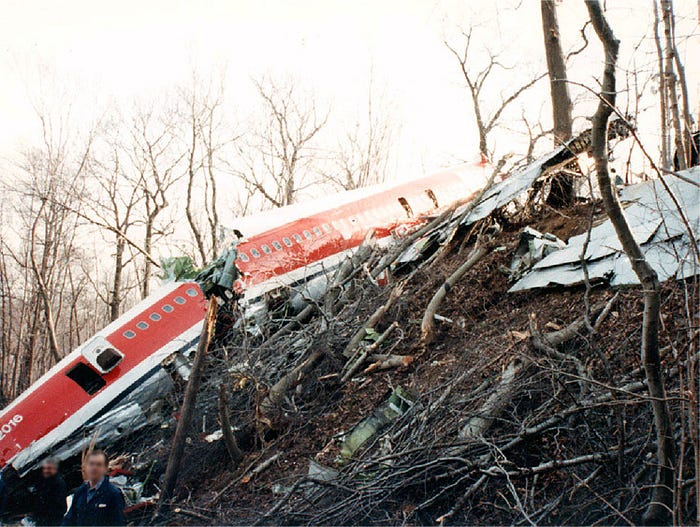
◊◊◊
Flight 052 would have been utterly routine had it not arrived to find JFK oversaturated with more airplanes than it could handle under the conditions. On the macro level, the circumstances for the crash were created not in the cockpit or in the tower, but at Flow Control in Washington, D.C. Investigators noted that the flow program for JFK was never revised from 33 aircraft per hour even though conditions began to worsen at around 16:00, reducing the number of successful landings. Flow Control should have responded by issuing a ground stop for all domestic flights scheduled to depart for JFK, forcing them to delay their departures until the existing backlog had been cleared. This was especially important given the large number of inbound flights from overseas, which Flow Control could not prevent from taking off. In the event, however, Flow Control seemed to be caught off guard by the earlier-than-expected deterioration of the weather in the New York area, and by the time they finally implemented a ground hold program at 20:59, there were already far too many planes circling over New York, including Avianca flight 052. In the NTSB’s opinion, Flow Control’s failure to react in a timely manner to the mounting traffic jam into JFK was a significant error of judgment.
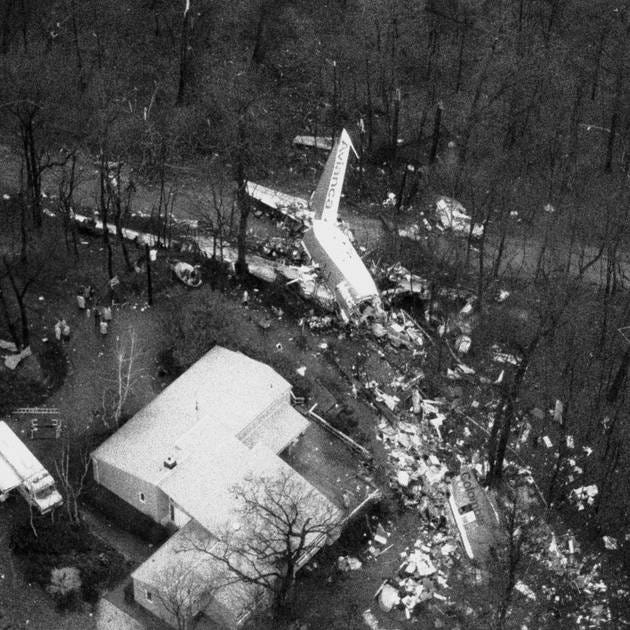
All else being equal, the airline still could have done a lot more to prepare the crew for what they might encounter as they approached the New York area. Avianca dispatchers had assigned flight 052 an unsuitable alternate airport that was affected by the same weather and traffic problems as JFK, and failed to consider other options, such as Syracuse or Buffalo, which had better conditions. Dispatchers told the NTSB that the flight plans for every Medellín-New York flight were automatically generated with Boston as the designated alternate airport. Apparently neither the dispatchers nor the flight crew bothered to cross-check with the weather forecasts to determine whether Boston actually met the minimum conditions required for an alternate per Avianca’s own operating procedures.
Strictly speaking, flight 052 never should have been dispatched without significant alterations to its flight plan. But even once it was underway, a lot more could have been done. Unlike every major US airline, Avianca did not provide an in-house “flight following” service which would allow dispatchers to monitor the flight’s progress and help the crew make operational decisions in real time. For US-bound flights, Avianca had instead contracted this service to a facility run by Pan Am out of Miami, but interviews with personnel there revealed that Avianca crews rarely phoned in. Despite the fact that they were dispatched with weather reports that were by then more than 10 hours out of date, Avianca flight 052 did not make use of this service to ask for an update on the conditions in New York, even though it would have been trivial to do so. In contrast, most crews bound for JFK that night would have called dispatch to come up with a contingency plan as soon as it became clear that holding would be necessary. Flight 052 was the exception — they simply did whatever they were told and hoped things would work out. The exact cause of this lack of action was difficult to determine, but it appeared to stem from a generally incurious culture at Avianca.
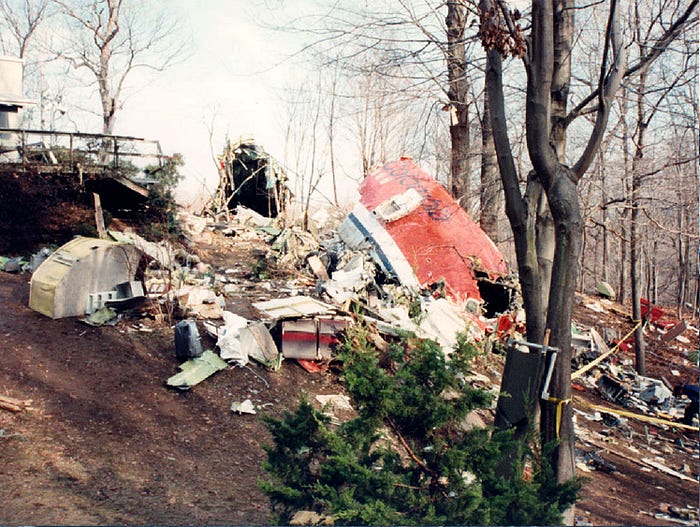
As a result of all of these factors, the crew of flight 052 arrived off the east coast of the US with no particular foreknowledge of what awaited them. When Washington ARTCC put them into a hold off Virginia, they did not complain. No one knows whether they put together a diversion plan, because they never asked for outside input, and the cockpit voice recorder only captured the last 40 minutes of the flight. But we do know that they made no inquiries about Boston until 20:09, and even then they never repeated their request after the controller handed them off to the next sector without following up. This suggested that they had no pre-agreed time at which, if they were still in holding, they would make the decision to divert. And in fact by the time they next mentioned fuel or Boston, it was too late to divert there anyway.
By then they were holding over CAMRN, inside the New York ARTCC, but nowhere near the head of the queue. They ended up holding over CAMRN for 29 minutes, on top of 29 minutes at Atlantic City and 19 minutes at Norfolk, for a total time of 77 minutes in holding. That used up not only their 30 minutes of holding fuel, but also the 28 minutes of fuel to reach their alternate, and some of their 30 minute reserve as well.
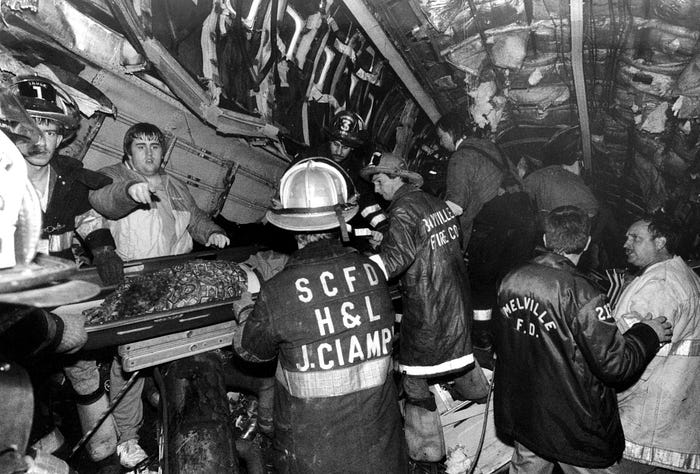
All modern airliners come with a “low fuel” warning, which activates when remaining fuel endurance drops below about 45 minutes. When this warning goes off, the manufacturer’s procedures unambiguously require pilots to declare a fuel emergency. But the Boeing 707, which first entered service in 1958, was not a modern aircraft, and it had no low fuel warning. Instead, 707 crews were expected to use their judgment to decide when they were in an emergency.
Normally, a crew would be expected to divert if they anticipated such an emergency condition in the future. It would be highly unusual to say nothing until after the option of diverting was already gone, but this is exactly what the pilots of flight 052 did. One possibility is that they wanted to see if they would really receive further clearance at 20:30 as the New York area controller had told them when they first started holding at CAMRN. Instead, at the promised time, the controller simply asked them to continue holding and gave them a new “expect further clearance” time. This happened twice before the crew seemed to realize that the EFCs they were getting were not realistic. But by then they had already been tricked into holding for so long that they could no longer reach Boston, becoming trapped in the mistaken belief that they would be cleared at any minute to approach JFK.
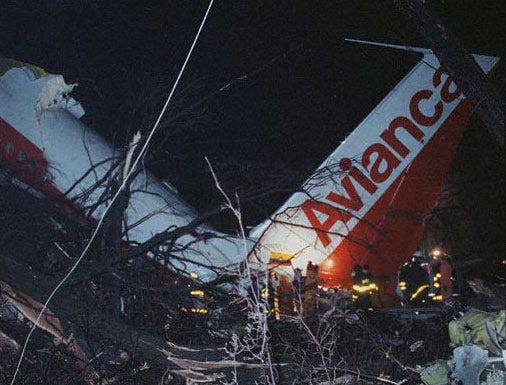
By the time they finally spoke up about fuel at 20:44, they had only 50 minutes of fuel remaining. Going by the rule of thumb for most aircraft, they were five minutes away from a “fuel emergency” condition, and it would have been entirely reasonable to declare one. While the 707 didn’t have a low fuel warning, Boeing did advise operators that there should be at least 7,000 pounds (3,175 kg) of fuel in the tanks upon landing, and that if any one tank dropped below 1,000 pounds, that would constitute a “minimum fuel” condition. A pilot should declare an emergency whenever they anticipate landing with less than minimum fuel. In fact, as flight 052 was on approach, an American Airlines crew warned the TRACON that they were 14 minutes away from “minimum fuel,” implying that if they did not land in 14 minutes, they would have to declare an emergency. This was a good example of what should be done under such circumstances. But the Avianca crew never took this step. Instead, First Officer Klotz simply told New York ARTCC that they might need “priority,” that they could only hold five more minutes, and that “we run out of fuel now.” Had he instead used the words “fuel emergency,” or advised that a fuel emergency was likely in the near future, their situation would have been rendered unambiguous in the eyes of air traffic control.
At this point, there were two possible interpretations of Klotz’s transmissions. One was that flight 052 would reach a “minimum fuel” condition after holding for five more minutes — and this would have been more or less correct. The other interpretation was that flight 052 could only hold for five more minutes before it would reach the fuel level at which the crew had pre-agreed to divert. Klotz essentially removed any ambiguity moments later when he told the New York area controller that they could no longer reach their alternate. But in a tragic twist of fate which informed all the events which followed, this information was lost in the handoff to the New York TRACON. The TRACON controller, hearing only that flight 052 could not hold more than five more minutes, erroneously assumed that they were approaching their diversion fuel level, not their minimum fuel level. It seems appropriate to mention the colloquial saying that “to assume is to make an ‘ass’ out of ‘u’ and ‘me.’” That was the TRACON controller’s cardinal sin: he assumed the best and failed to ask for clarification.
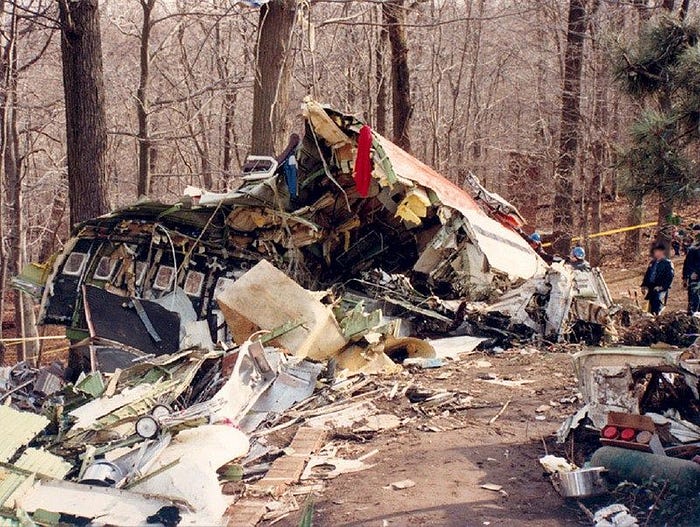
This fateful conversation highlighted the importance of standardized forms of communication. Out of necessity, air traffic control terminology is highly regimented, and for the most part it is possible to elicit particular standard responses by using particular standard words and phrases, as though speaking to a machine. If you want a controller to get you on the ground as quickly as possible, there are three words which will always trigger the desired response: “pan-pan,” “mayday,” and “emergency.” Controllers are trained to respond to these words in specific, predictable ways. On the other hand, the word “priority,” which was used by the crew of flight 052, had only a semantic meaning in this particular context. Controllers were not obligated to respond to a request for “priority” in any predictable fashion, although they would generally try to expedite your arrival.
These subtle differences in lexical functionality can become especially important in an environment where controllers are speaking to pilots whose native language is not English. A Spanish-speaking crew and an English-speaking controller might not grant the same meaning, weight, or value to a word unless it has been assigned these things by a higher authority. On the other hand, the language barrier might have had less to do with this particular misunderstanding than is sometimes believed. According to other Avianca pilots, 707 crews at the airline had received training materials from Boeing which stated that “during any operation with very low fuel quantity, priority handling from ATC should be requested.” Thanks to this training, some Avianca pilots had apparently gotten the impression that asking for “priority” and declaring an “emergency” would produce similar results. Avianca’s operating procedures more or less implied the same. Controllers, on the other hand, possessed no such understanding. To them, flight 052’s request for “priority” indicated a generally increased level of urgency, but they believed that if the situation was an emergency, the crew would have said so.
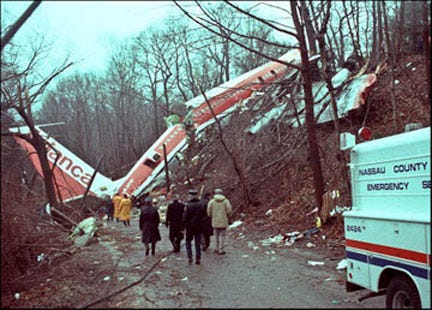
This belief informed the TRACON controller’s decision to treat flight 052 as a non-emergency aircraft which nevertheless required some extra attention. As such, he pulled it out of the holding pattern right away, but did not put it on the fastest possible approach path. After all, while it was within his authority to send flight 052 directly to the front of the queue, he would normally only do so for an aircraft which had declared an emergency, and the Avianca crew had not. Therefore, had they used the words “pan-pan,” “mayday,” or “emergency” at any point prior to about 21:05, the crash almost certainly would not have happened.
The pilots, for their part, were led to believe, based on their swift extraction from the holding pattern, that air traffic control was indeed giving them “priority” — which in their minds meant that they were being placed on the fastest possible route to the airport. Nevertheless, investigators were baffled by their failure to question this belief when the controller ordered them to make a 360-degree loop, at the cost of six minutes, in order to insert them at a more convenient spot in the queue. Did they really think this was the fastest way to get on the ground? We may never know for sure. But the cockpit voice recording made it clear that First Officer Klotz, at least, never stopped believing that they were being given “priority,” even once it should have become obvious that they were not.
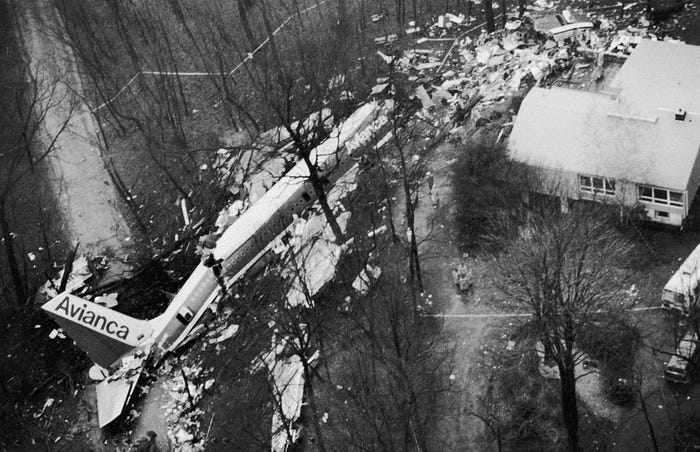
His conflation of “emergency” and “priority” was rendered most transparent during the subsequent missed approach, when Captain Caviedes ordered his first officer to declare an emergency, and Klotz replied that he had. There is no reason to believe Klotz was purposefully lying about having declared an emergency. Instead, he probably thought that he had already done so when he asked for “priority.” Unfortunately, this was not the case, and it doesn’t seem that he ever caught on. Captain Caviedes, who had 16,000 hours of flight experience (as opposed to Klotz’s 1,800 hours), might have been in a better position to understand what was going on had he been the one speaking with ATC. However, this was out of the question, since only First Officer Klotz could speak English. Although all international airline pilots are required to speak basic Airman’s English, evaluation standards in many countries were and sometimes still are unacceptably lax. Besides, Airman’s English is quite simply insufficient to deal with the controllers at Kennedy, who are known to play fast and loose with their instructions when the stakes are low.
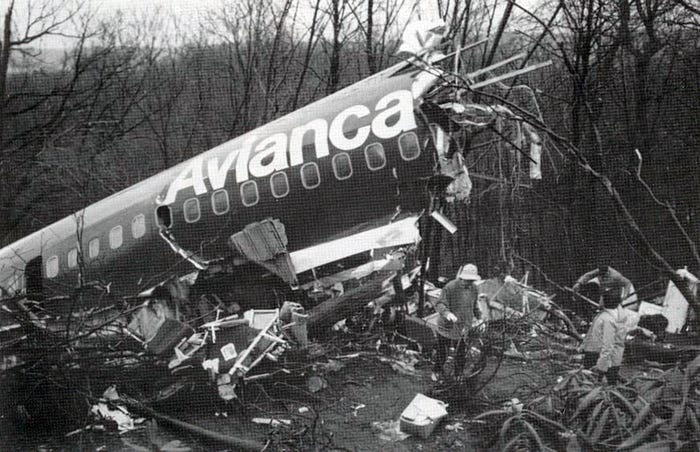
Of course, none of this would have mattered if flight 052 had managed to land on its first approach attempt. If Captain Caviedes had pulled it off, no one would have been hurt, and the incident would be a footnote in history. The approach was physically possible, as evidenced by successful landings either side of flight 052, but it was undeniably difficult, and the NTSB expended some effort to understand why it failed.
As was previously mentioned, the approach nearly ended in disaster because Captain Caviedes used a normal rate of descent during an abnormally strong headwind, causing the plane to descend too steeply. His inability to correct this error most likely stemmed from a number of factors. For one, the autopilot was inoperative, and he had been flying by hand all the way from Medellín. Even for an experienced captain, six hours of manual flying would have resulted in discernible physical and mental fatigue. This fatigue would have made it harder for him to hold the plane precisely on the localizer and glide slope, a function normally accomplished by the autopilot, amid rapid changes in wind speed. He could have relied on his flight director, which would have overlaid instructions onto his attitude indicator, but this too was inoperative. That meant that he was flying the approach based on what pilots call “raw data” — the basic indications produced by the glide slope and localizer equipment on runway 22 Left. This was more or less the same way pilots would have done it when the first 707 took to the skies in 1958.
Trying to fly an ILS approach with his autopilot and flight director inoperative, at night in a storm, with 30 knots of wind shear, while suffering from fatigue and enormous stress, proved to be more than Caviedes could handle. In the end, he lost track of the glide slope, and the plane nearly struck the ground in a residential area short of the runway. Although he knew that successful completion of a second approach was improbable, he had no choice but to go around.
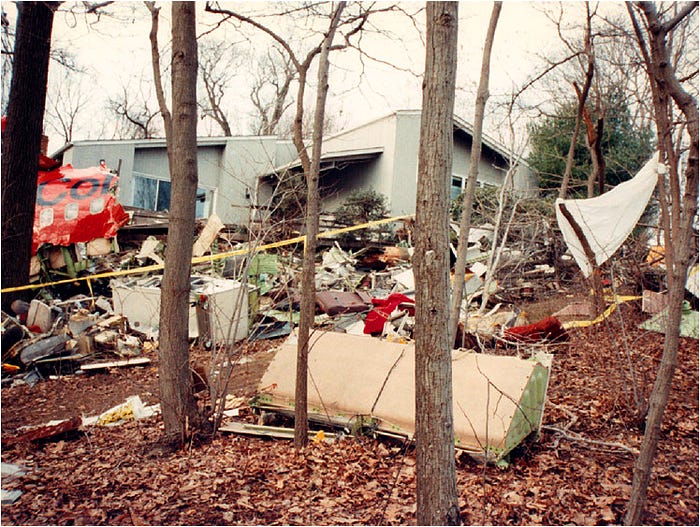
In the NTSB’s opinion, a crash was probably inevitable from that point onward, even if the crew had requested the shortest possible route back onto the approach. Nevertheless, one has to wonder what was going through the mind of First Officer Klotz when he agreed to the controller’s proposal to fly 15 miles northeast of the airport before doubling back. He surely knew that complying with this instruction would be a death sentence. He could not have failed to realize that they would run out of fuel half way through the maneuver. And yet he never lodged a word of protest, and the crew dutifully flew the 15-mile downwind leg, as though they had already resigned themselves to their own mortality. The two minutes of silence which followed, broken only by the captain’s call to “take it easy,” almost seem like they were spent making peace with their god. Did the pilots of Avianca flight 052 actually just give up? We will never know for sure, but the simplest and most chilling explanation is that they did.
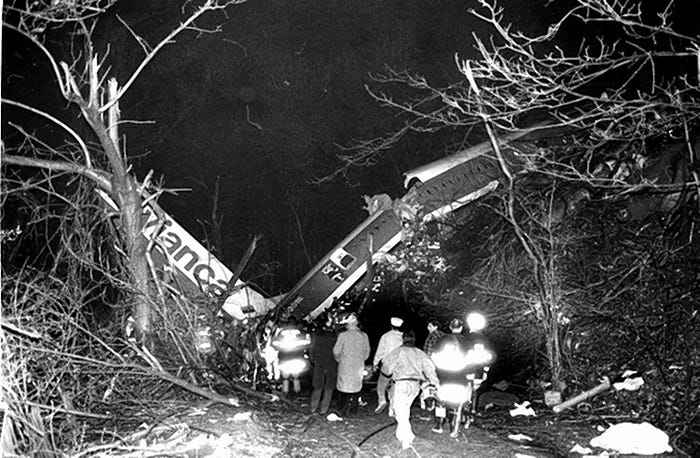
In the end, the NTSB determined that the probable cause of the accident was the pilots’ failure to clearly articulate that they were in an emergency. They criticized the captain’s “lack of leadership” and the other crewmembers’ lack of “active team support.” But while the investigators achieved a consensus on the role of the pilots, they did not manage to do so for the role of air traffic control. In their majority opinion, the board wrote that the controllers’ handling of flight 052 was “proper,” given the information which was made available to them. One member dissented, writing that while the findings were basically correct, the report should have spent more time discussing certain inadequacies in the handling of flight 052. Among several other points, he argued that the Washington area controller should have warned the crew that planes were holding at multiple locations up and down the coast, and that they could expect long delays. Had he done so, the crew might have chosen to divert before it was too late.
Colombian investigators, who also participated in the inquiry, were even more critical. In their opinion, the handling of flight 052 was not “proper” for two main reasons. First of all, they argued, the New York TRACON should not have accepted control of flight 052 from the New York ARTCC because they were not ready for it, as evidenced by the need to send the flight around one more holding pattern before slotting it into the queue. Had the TRACON rejected the handoff and kept flight 052 in holding over CAMRN, the crew would likely have asked to divert to the nearest available airport. And secondly, they argued, if the TRACON chose to accept flight 052 because it had requested priority, then the flight should have been sent to the front of the queue, not around a loop and into the back. The Colombian opinion was appended at the bottom of the NTSB’s final report, but none of its arguments were accepted by the board. Nevertheless, the FAA ultimately joined Avianca in admitting partial legal responsibility for the accident, resulting in a payout of $200 million to passengers who were injured in the crash.
Looking back, everyone involved seems to have done their best to learn from the accident. Later that same year, the crew of another Avianca flight to New York avoided a similar fate by declaring “minimum fuel” in a timely manner; although the plane landed with only 10 minutes of fuel remaining, disaster was averted. Two months after that, yet another Avianca flight triggered an emergency response after the pilot stated he had “15 minutes of fuel” remaining. Recalling their coworker’s failure to question Avianca flight 052, the controllers tried repeatedly to get the pilot to clarify whether he had 15 minutes total or 15 minutes until he had to divert. After these inquiries failed to resolve the confusion, the controllers declared an emergency on the flight’s behalf and sent it straight to the front of the queue, where it landed without incident. A subsequent inspection revealed that the plane still had more than two hours of fuel on board when it touched down, and the captain was at a loss as to why he was given priority. Nevertheless, the controllers felt it was better to be safe than sorry.
This latter incident, and the confusion which caused it, highlighted another area which received significant improvements as a result of the crash: pilot proficiency in English. In 1990, pilots in theory were expected to know English, but no international standard existed. As a direct result of the crash of flight 052, the FAA worked with the International Civil Aviation Organization to establish an international standard of Airman’s English proficiency, which is now in use around the world.
Still, that was not all. The crash also spurred the FAA to begin formal International Safety Audits, which assess the capability of foreign air safety regulators to uphold international standards. The first country to be audited was Colombia, which failed in several areas, prompting reforms. Domestically, the FAA implemented a system to inform pilots about macro-level traffic situations, allowing them to more easily learn of delays and more effectively plan diversions. Training for controllers was altered to emphasize the importance of requesting clarification if it is unclear whether a flight needs special assistance. And finally, the strength of passenger seats on all new aircraft was improved, and Avianca implemented a crew resource management training program, designed to ensure that all crewmembers effectively communicate with one another.
◊◊◊
After all was said and done, however, certain questions necessarily remained unanswered. Why didn’t Klotz ever utter the word “emergency”? Was he on some level reluctant to be seen as imposing a burden on the busy air traffic controllers? Did he find the controllers intimidating? Did he really think “priority” was good enough, all the way to the end? Did Captain Caviedes really not know enough English to have translated the Spanish word “emergencia” into the English “emergency” and called it in himself? And if he could have, then why didn’t he? Why did Klotz never tell air traffic control precisely how much fuel remained? And in a similar vein, why didn’t the TRACON controller ask how much fuel flight 052 actually had?
The fact that no one did any of these things perhaps attests to the human ability to seek and develop patterns and meanings which are rarely empirical. Indeed, words convey a great deal of subjective meaning beyond just their literal definitions, much of which is open to interpretation. Each sentence carries with it unspoken intentions, acknowledgements of authority, and cultural contexts. We can all hear the words “I think we need priority,” and our interpretations of those words will generally fall within a certain range of possible outcomes, but the exact answer will depend on who is asking, who is being asked, the relative levels of authority between the asker and the listener, what emotional tone the listener ascribes to the sentence, and what actions were taken by people who previously made similar statements in the listener’s presence, among countless other factors. There was undoubtedly an interpretation of those words which would prompt the listener to ask, “Are you in an emergency?” But it was not the interpretation that came to mind for that specific controller at that specific moment. And so from a slow accumulation of words and actions overlaid with cultural assumptions and personal interpretations, plus a healthy dollop of bad luck, two groups of people came to adopt rather different beliefs about the nature of the situation.
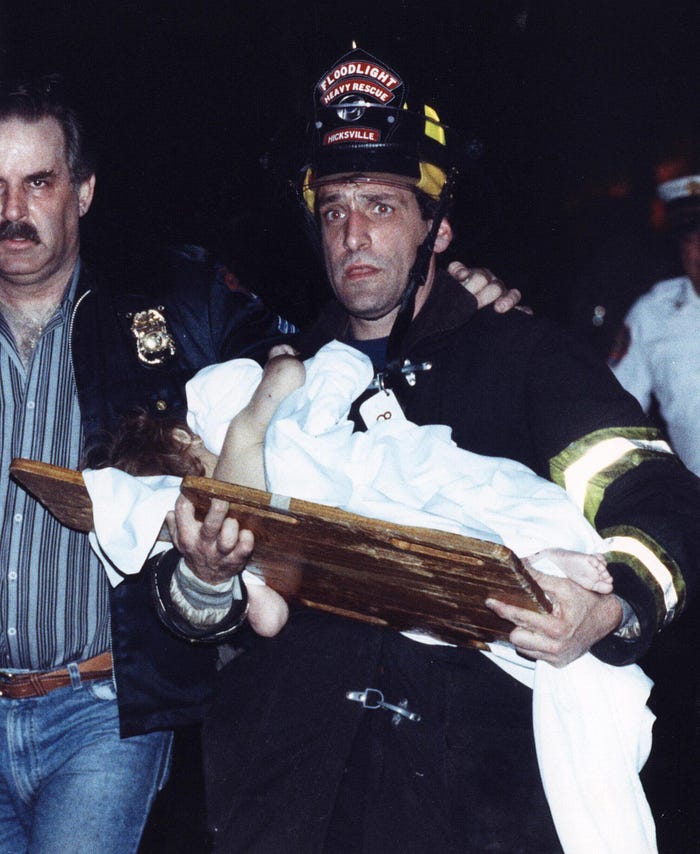
◊◊◊
It can sometimes be hard to reconcile the fact that 73 people died, and others received life-altering injuries, because of a word which was never said. More than 30 years later, many of the survivors still struggle to understand it. Some lie in bed at night wondering why First Officer Klotz never brought himself to utter the word “emergency;” at the same time, others lose sleep over why the controller didn’t send flight 052 to the head of the queue when Klotz asked for “priority.” They don’t necessarily realize that they are asking the same question.
The only way to know would be to ask the pilots what they were thinking during the long, slow demise of flight 052, but they are no longer with us. Their final hour was spent in a state of mounting agitation, realizing only too late that they had fallen into a nightmare from which they could not awake. The passengers might have felt fear, but the pilots experienced something even more terrible: a cold, scientific certainty that they were going to die. Did they understand where they went wrong, and yearn futilely for another chance to fix it? Or did they curse the cruel universe, lamenting the strange sequence of seemingly unconnected events which brought them to the doorstep of disaster, trapped aboard a plane which had yet to crash but could not possibly reach its destination? Only they can know, and it is not our place to answer for them. All we can do is tell their story and repeat their now immortal words — both those which were spoken, and those which, tragically, were not.
_________________________________________________________________
Join the discussion of this article on Reddit!
Visit r/admiralcloudberg to read and discuss over 220 similar articles.
You can also support me on Patreon.
